The Excel IMCOS function is an Engineering function, and its purpose is to return the cosine of a complex number; it is not a complicated function to use; it is pretty easy as long you know its formula. The IMCOS function will return the #VALUE error value if the Inumber is logical. Logical values are the concept that values can be reduced to either True and False.
- The formula for the IMCOS function is
IMCOS (number). - The syntax for the IMCOS function is below.
- Inumber: A complex number for which you want the cosine. It is required.
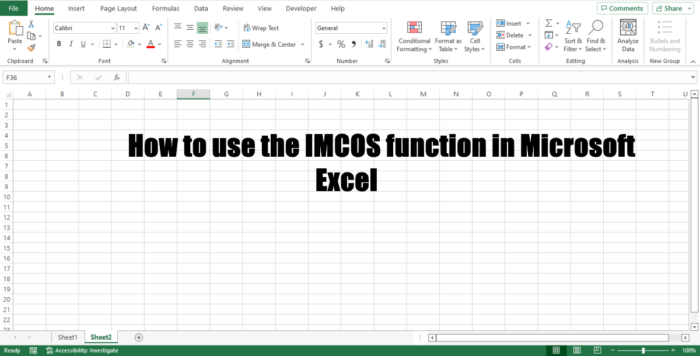
How to use the IMCOS function in Microsoft Excel
Follow the steps below to use the IMCOS function in Microsoft Excel.
- Launch Excel
- Create a table or use an existing table
- Type the formula for the IMCOS function into the cell you want to place the result
- Press Enter to see the result
Launch Microsoft Excel.
Create a table or use an existing table.
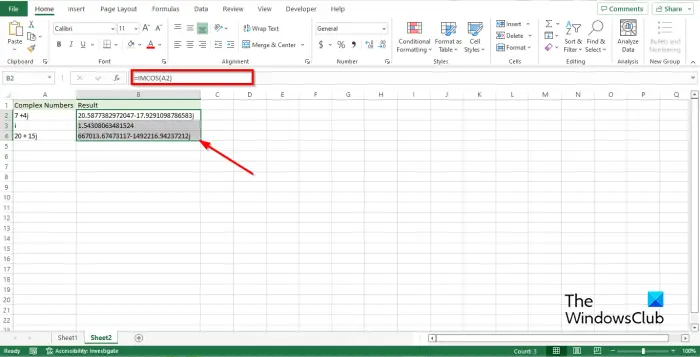
Type the function =IMCOS(A2) into the cell you want to place the result.
Cell A2 has the complex number you want to cosine.
Then press the Enter key to see the result.
Drag the fill handle down to see the other results.
There are two other methods to use the IMCOS function in Excel.
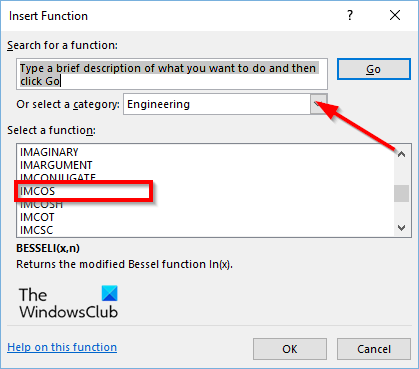
Method one is to click the fx button on the top left of the Excel worksheet.
An Insert Function dialog box will appear.
Inside the dialog box in the section, Select a Category, select Engineering from the list box.
In the section Select a Function, choose the IMCOS function from the list.
Then click OK.
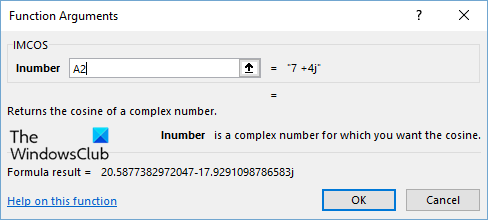
A Function Arguments dialog box will open.
In the Inumber section, input into the entry box the cell A2.
Then click OK.
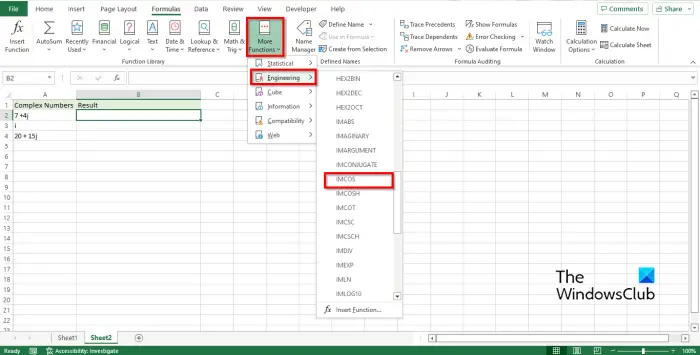
Method two is to click the Formulas tab and click the More Functions button in the Function Library group.
Hover the cursor over Engineering and select the IMCOS function from the list.
A Function Arguments dialog box will appear.
We hope you understand how to use the IMCOS function in Microsoft Excel.
What is formula and function?
In Microsoft Excel, a Formula is an equation designed by a user, while a Function is a predefined calculation in a spreadsheet calculation. Using both formulas and function are popular in Microsoft Excel.
What is cell in Excel?
In Excel, cells are boxes that users will see in the grid of a worksheet. Each cell is identified by its reference, the column letter, and the row number that intersects at the cell’s location. When it comes to a cell reference, the column comes first.
What is formula bar in Excel?
When you look above a spreadsheet, you will see a formula bar. The formula bar is a section of Microsoft Excel or other spreadsheet applications. The formula bar shows the contents of the current cell or cells and lets you view and create formulas.
What are the top 15 Excel functions?
- CONCATENATE: Combines text, numbers, dates, etc from multiple cells into one.
- LEN: Provides the number of characters in a given cell.
- COUNTA: Identify if a cell is empty.
- DAYS: Determines the number of calendar days between two dates.
- SUMIFS: Sum the values in a range that meets the criteria that you specify.
- AVERAGEIFS: Calculates the average of a range based on one or more true or false conditions.
- VLOOKUP: When you need to find things in a table or a range by row.
- FIND: Returns the location of a substring in a string.
- IFERROR: Traps and handle errors in a formula.
- COUNTIFS: applies criteria to cells across multiple ranges and counts the number of times all criteria are met.
- LEFT/RIGHT: Extract static data from cells.
- RANK: Returns the statistical rank of a given value within a supplied array of values.
- MINIFS: Take the minimum of a set of values.
- MAXIFS: Looks for the maximum number.
- SUMPRODUCT: Returns the sum of the products of corresponding ranges or arrays.
READ: How to use the SERIESSUM function in Excel
Why is Excel important?
Microsoft Excel is used globally, and it assists users to identify trends and organize and sort data into meaningful categories. Excel helps businesses to calculate statistics, organize their data, and sort employees’ work hours and expenses. Excel is normally used for Data Entry, Data Management, Accounting, Financial Analysis, Charting and Grafting, Programming, Task Management, and Time Management.
Leave a Reply